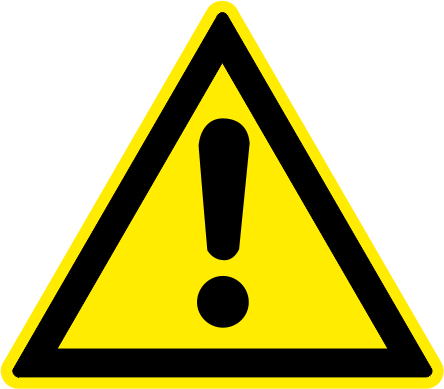Functions for Bound Checks: CheckBounds
The task of this monitoring function is to handle bound violations appropriately.
Examples of reactions to violations include setting error flags and changing the value
of the array index. The check is performed only for one variable array index. An incorrect
constant array index causes a compiler error. CODESYS calls the function implicitly when values are assigned to an ARRAY variable.
After inserting the function, you receive automatically generated code in the declaration and implementation parts. See below.




CAUTION

To obtain the feature for monitoring functions, do not edit the declaration part. However, you are permitted to add local variables.
Declaration part
// Automatically generated code: DO NOT EDIT FUNCTION CheckBounds : DINT VAR_INPUT index, lower, upper: DINT; END_VAR
Implementation
// This automatically generated code is a suggested implementation.
IF index < lower THEN
CheckBounds := lower;
ELSIF index > upper THEN
CheckBounds := upper;
ELSE
CheckBounds := index;
END_IF
(* It is also possible to set a breakpoint, log messages or e.g. to halt on an exception:
Add CmpApp.library, SysExcept.library and SysTypes2_Itf as newest.
Declaration:
VAR
_pApp : POINTER TO CmpApp.APPLICATION;
_result : SysTypes.RTS_IEC_RESULT;
END_VAR
Implementation:
_pApp := AppGetCurrent(pResult:=_result);
IF index < lower THEN
CheckBounds := lower;
IF _pApp <> 0 THEN
AppGenerateException(pApp:=_pApp, ulException:=RtsExceptions.RTSEXCPT_ARRAYBOUNDS);
END_IF
ELSIF index > upper THEN
CheckBounds := upper;
IF _pApp <> 0 THEN
AppGenerateException(pApp:=_pApp, ulException:=RtsExceptions.RTSEXCPT_ARRAYBOUNDS);
END_IF
ELSE
CheckBounds := index;
END_IF
*)
When the “CheckBounds” function is called, it receives the following input parameters:
-
index: Index of the array element -
lower: Lower limit of the array range -
upper: Upper limit of the array range
The return value is the index of the array element, as long as it is within a valid range. If not, then the CODESYS returns either the upper or lower limit, depending on which threshold was violated.
Example: Correction of the access to an array outside the defined array bounds
In the sample program below, the index falls short of the defined lower limit of the
a array.
PROGRAM PLC_PRG VAR a: ARRAY[0..7] OF BOOL; b: INT:=10; END_VAR a[b]:=TRUE;
In this example, the CheckBounds function causes a to change the upper limit of the array range index to 10. The value TRUE is assigned then to the element a[7]. In this way, the function corrects array access outside of the valid array range.
Example: Output of an exception when array limits are violated.
Add the following libraries in the library manager of the application:
-
CmpApp.libraryandSysExcept.libraryas placeholder libraries -
SysTypes2_Itfs.librarywith “Newest version always”
Add a “CheckBounds” object below the application and modify the specified code as shown below.
Declaration part
FUNCTION CheckBounds : DINT
VAR_INPUT
index, lower, upper: DINT;
END_VAR
VAR
_pApp : POINTER TO CmpApp.APPLICATION;
_Result : ISystypes2.RTS_IEC_RESULT;
END_VAR
Implementation part
// This automatically generated code is a suggested implementation.
_pApp := AppGetCurrent(pResult := _Result);
IF index < lower THEN
CheckBounds := lower;
IF _pApp <> 0 THEN
AppGenerateException(pApp := _pApp, ulException := RtsExceptions.RTSEXCPT_ARRAYBOUNDS);
END_IF
ELSIF index > upper THEN
CheckBounds := upper;
IF _pApp <> 0 THEN
AppGenerateException(pApp:=_pApp, ulException:=RtsExceptions.RTSEXCPT_ARRAYBOUNDS);
END_IF
ELSE
CheckBounds := index;
END_IF
Program a “MAIN_PRG” object below the application with the contents shown below.
PROGRAM MAIN_PRG VAR xInit : BOOL; arData : ARRAY[0..7] OF BYTE; i : INT; dwAdr : DWORD; END_VAR IF NOT xInit THEN // Required for CheckBounds xInit := TRUE; END_IF // Set i to a value > 7 or < 0 // Generates an exception in CheckBounds, user-defined arData[i] := 11;
When you load and start this application, an exception will be thrown when array bounds are violated. Processing stops in “CheckBounds” so that the type of error can be detected.






